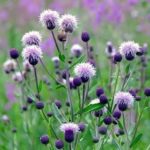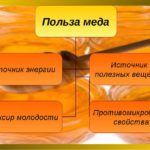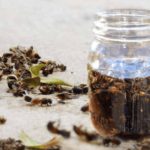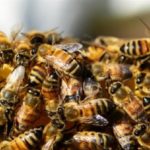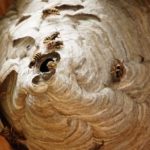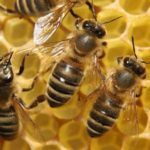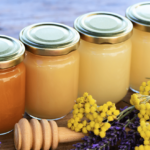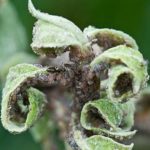With the onset of autumn, beekeepers need to move on to work that will ensure the insects have a quiet winter. The procedure for forming a dadan nest when preparing bees for the upcoming winter has some nuances and features. It is necessary to familiarize yourself in advance with the possible methods and recommendations of beekeepers in order to then choose the most appropriate course of action.
Build time
It is worth starting preparation for bees (regardless of the breed) at the end of August.In the fall, the beekeeper should inspect the beehives every 14 days. This will help track the behavior of insects so that you can then place frames in time. You can’t delay the rearrangement, but it should still be possible to form a bed.
Preparing for winter
Winter is a difficult month for bee colonies that humans breed. There is a specific list of actions that a beekeeper needs to perform:
- collect honey for the last time;
- Gradually complete autumn feeding of drones;
- inspect the hive (if necessary, make repairs);
- After the drones weaken, they need to be removed.
Most of the preparation takes place outside; you need to properly plan a list of activities, prepare the necessary clothes and tools in advance.
Attention! Wild bees do not require additional security measures. But the owner takes away honey and other nutritious foods from the family, so some may not survive.
Hive inspection
The hive is inspected with special care - it is not allowed to leave garbage or unnecessary items. It is necessary to inspect the hive taking into account the following features:
- there is no need to use dark colors for clothes; wool, flannel and cloth are also perceived negatively;
- strong odors can cause insect aggression (regardless of whether they are pleasant or not);
- approach the house from the back or side (this does not create obstacles for the bees to fly, resulting in less disturbance to the families).
After this, you need to install new objects. Additional nuances to consider:
- the inspection is carried out in sunny weather (there should be no precipitation, wind, temperature above 16 °C);
- if the family is calm, you can choose a cloudy day;
- Additionally, it is necessary to evaluate the strength of the family, the presence of a queen in the nest, as well as the amount of food and its quality.
Attention! The presence of a queen is indicated by the presence of one-day-old eggs. If it is not there, you need to place a separate frame in the house with seeding from a different family. This affects how the bee colony will spend the winter.
Methods for forming a bee nest for the winter
The method of processing hives depends on the preferences of the beekeeper, his skills and techniques for developing bee colonies (number of individuals, size of houses, selected number of frames). There are four generally accepted techniques - one-sided corner, two-sided, beard, Volokhovich method. Each has certain advantages and disadvantages, so you need to familiarize yourself with the presented options in advance in order to choose the right one in a timely manner.
One-sided corner
This method of bee placement consists of the following steps:
- after inspection, completely sealed frames with honeycombs are selected;
- selected elements are displayed on one edge;
- then they display the rest - in descending order;
- There should be at least 2 kg of honey left in the closing line.
The total weight of the formed nest should be reduced to 16-18 kg. If the mass exceeds the specified figure, an additional inspection is required. Features of collecting nests in the next video.
Double sided
This option differs from the previous one in the technique of placing the remaining frames: in the previous option, the layout begins on one side, in this one, full lattices begin to be laid out evenly on both sides. With each frame you need to reduce the amount of honey in the combs. The double-sided technique allows you to evenly distribute the efforts of the remaining bees in the family and food between them.
Beard
This option for forming a nest is suitable for weakened families (including nucs, and also if food supplies are insufficient). The main difference from the previous options is that frames with a large amount of feed are installed in the center, and from them elements are distributed in both directions in decreasing order. You need to collect honey up to a mass of 16-18 kg (this rule is true for all the methods described).
Attention! In order to correctly form a nest for wintering, it is necessary to prepare the hives. It is possible to form a hive for winter only taking into account the removal of old overcrowded elements.
This option is optimal for families with a small number of individuals, as well as families with initial honey production.
Volachovich method
Features of collecting a bee nest using this technique are as follows:
- fertilizing must be completed before September 20;
- one family needs to be fed about 10 kg of food during autumn preparation;
- you need to form the nest in such a way that there are 12 frame nets left inside with an equal amount of honey on each (2 kg each);
- Additionally, two grates are installed on the sides, and an additional one with syrup is placed below.
When reducing the amount of food, you need to monitor the presence of honeydew on the grates.If it remains, it will affect the quality of honey, and therefore the wintering of bee families and their strength in the spring. Features that beekeepers need to consider:
- sufficiently working families form into a block when the temperature reaches 7 degrees above zero;
- if the family is not so hardy, the collection ends when a constant temperature of 12° Celsius is reached;
- It is important to keep track of the last honey harvest for the quality formation of a nest for the winter.
Additional complementary feeding with this method of preparation for wintering ends in the last days of September.
Caring for bees after nest formation
Bee care planning is carried out by month - distributed over September, October and November. Peculiarities:
- in September it is necessary to rejuvenate the colonies, assemble bee houses, and install feeding grids. Attention! It is important to install additional metal grilles with a small cage. This method will help protect beehives from mice; canopies are installed on top to protect them from snow and rain;
- in October, bee families form into a ball; in some cases (if the temperature rises above 12 degrees, the bees can make their last flight), the beekeeper must remove the extensions, check the honeycombs, it is better to melt the old ones into wax;
- in November - the beginning of winter preparation, insects no longer fly around the surroundings, it is necessary to finally check the equipment and houses, it is also necessary to treat the honeycombs and carry out disinfection against moths (the wax variety).
It is also necessary to carry out additional work - treatment against varroa mites, culling of families and drones. It is enough to feed strong families with syrup, while others need to be fed with honey from the May harvest.
Preparing families for wintering is a mandatory step if the beekeeper intends to engage in apiary work in the future. The activities are varied, but you need to familiarize yourself with the preparation options in advance in order to choose the appropriate way to work with bee colonies.










